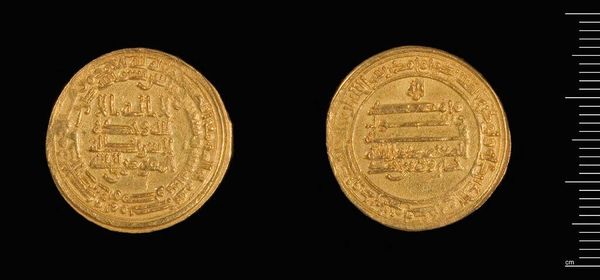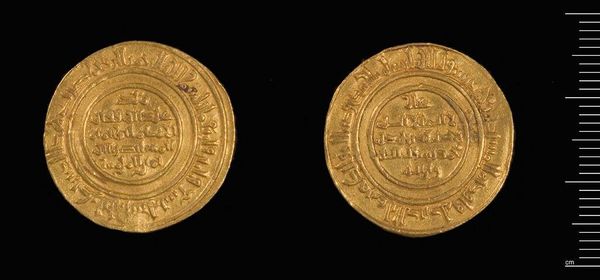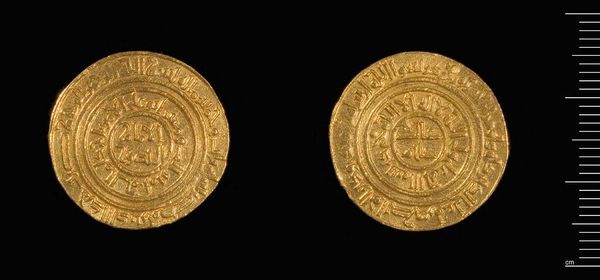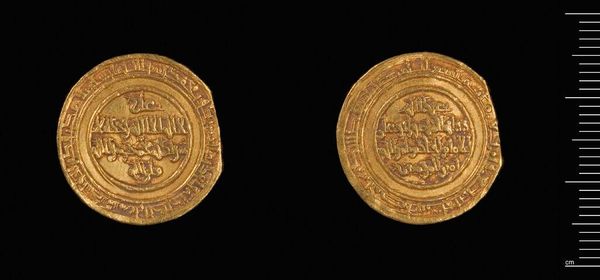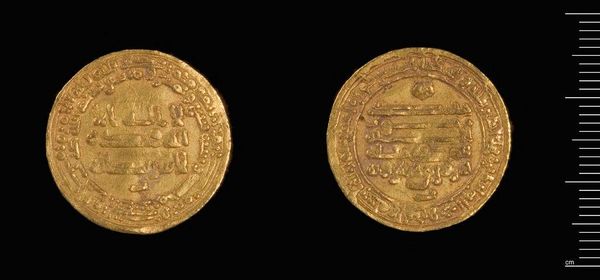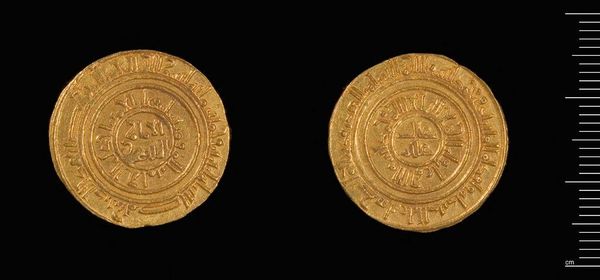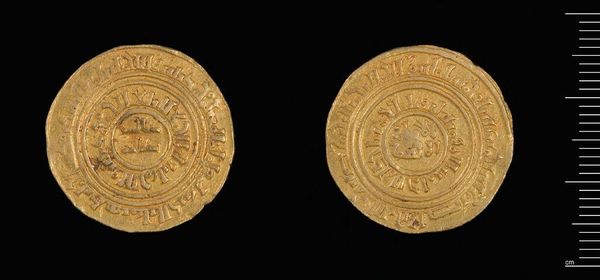
Dimensions: 4.17 g
Copyright: CC0 1.0
Curator: Here we have a Dinar of al-Hakim from Misr, now part of the Harvard Art Museums. What strikes you first about this coin? Editor: Its small scale is fascinating; it's a testament to how much power could be contained in such a concentrated and portable form. Gold itself carries so many symbolic connotations. Curator: Absolutely, the gold is significant. Consider the labor to mine and refine it, then the minting process itself. Each step reflects al-Hakim's wealth and command over resources. The inscriptions, too, served a crucial function. Editor: Visually, the Kufic script, meticulously inscribed, evokes notions of divine authority, blending political and religious power in a single object. It connects al-Hakim to a larger Islamic world and its associated cultural memory. Curator: Indeed, and each coin disseminated throughout the empire reinforced that power structure. It’s also a standardized weight and measure, facilitating trade and economic control, all wrapped up in one small, gleaming package. Editor: It's a potent reminder that even the smallest objects can be saturated with meaning, reflecting both worldly power and spiritual aspirations. Curator: A beautiful intersection of the material and the symbolic, wouldn't you agree? Editor: I certainly would. It makes me consider the cultural capital these coins represented.
Comments
No comments
Be the first to comment and join the conversation on the ultimate creative platform.

